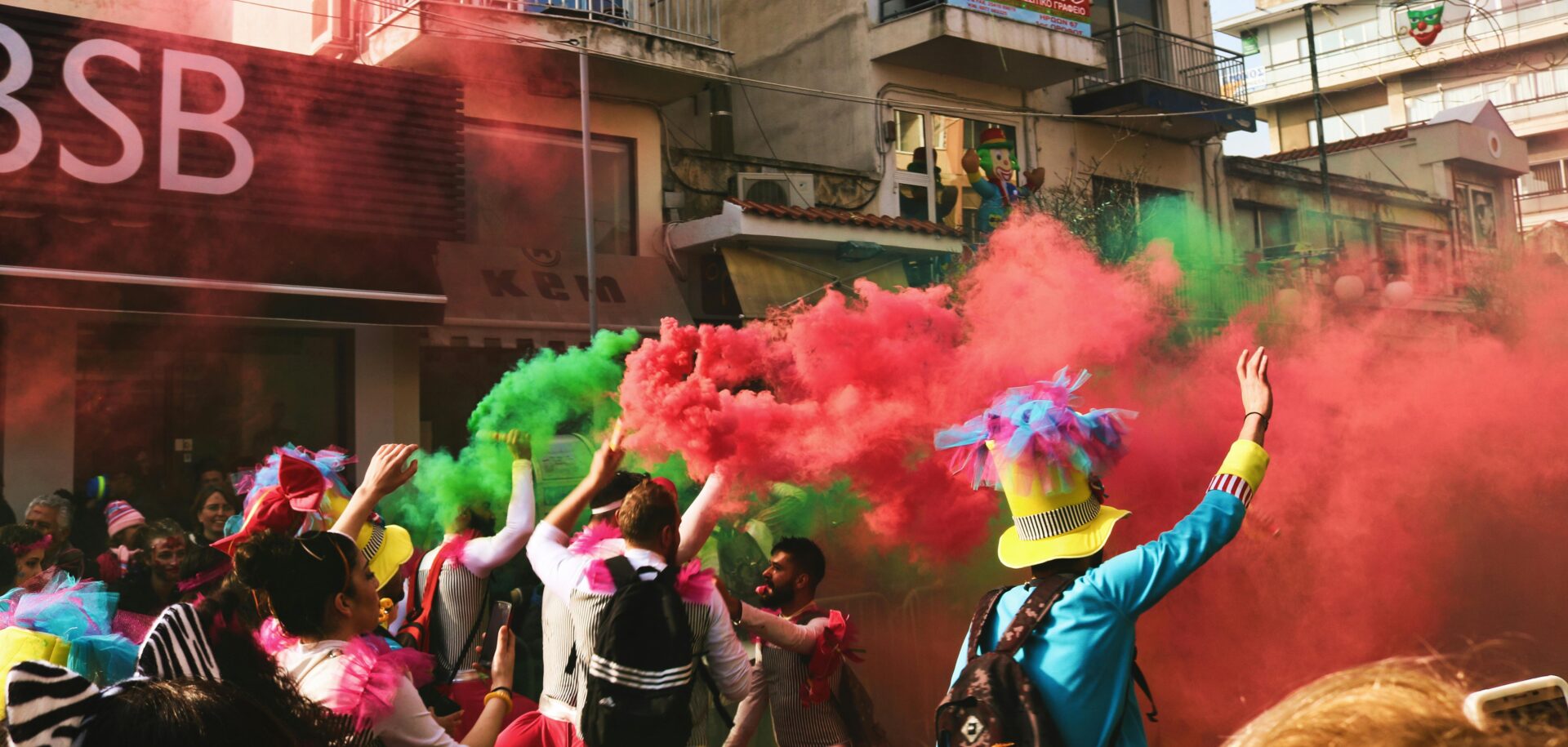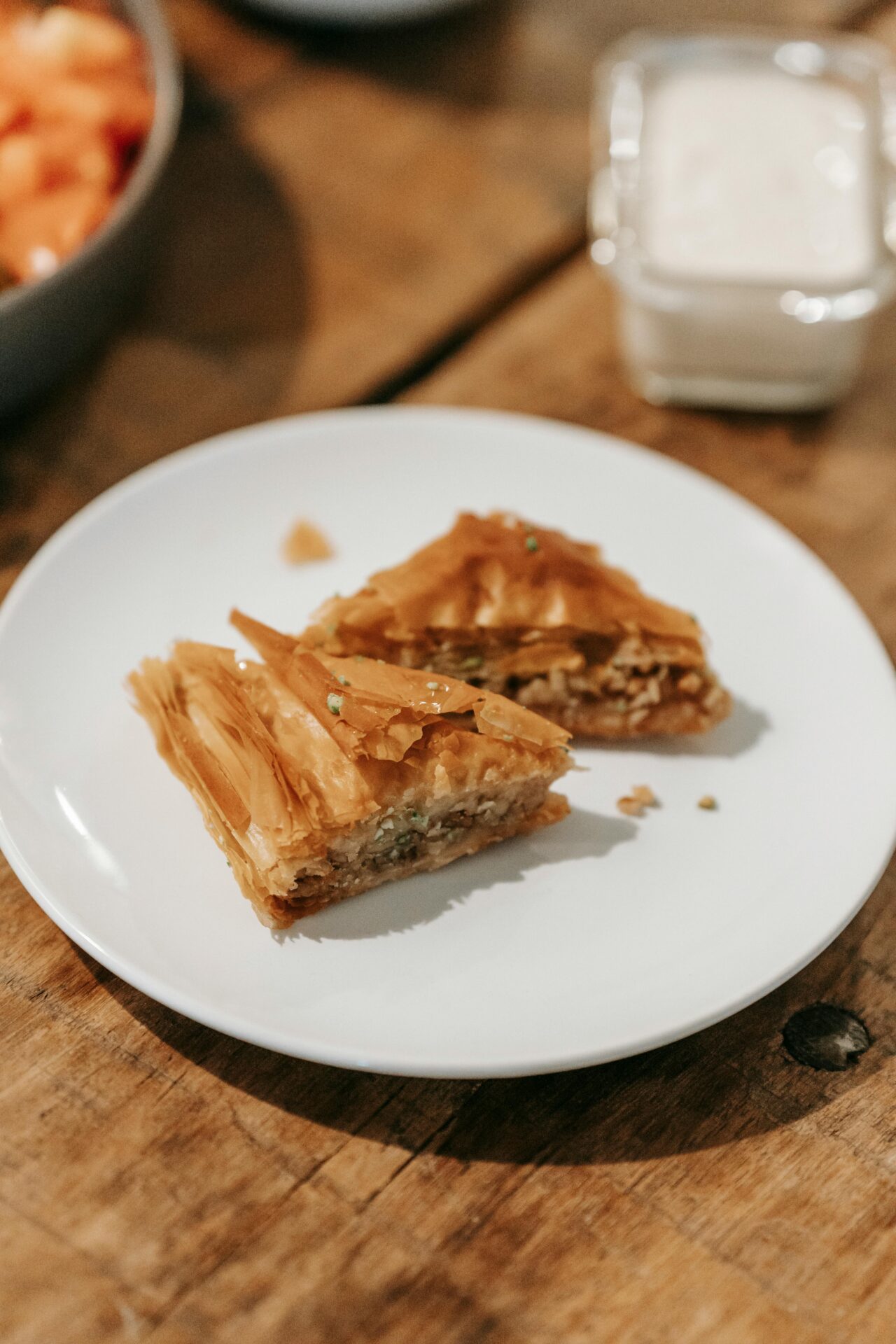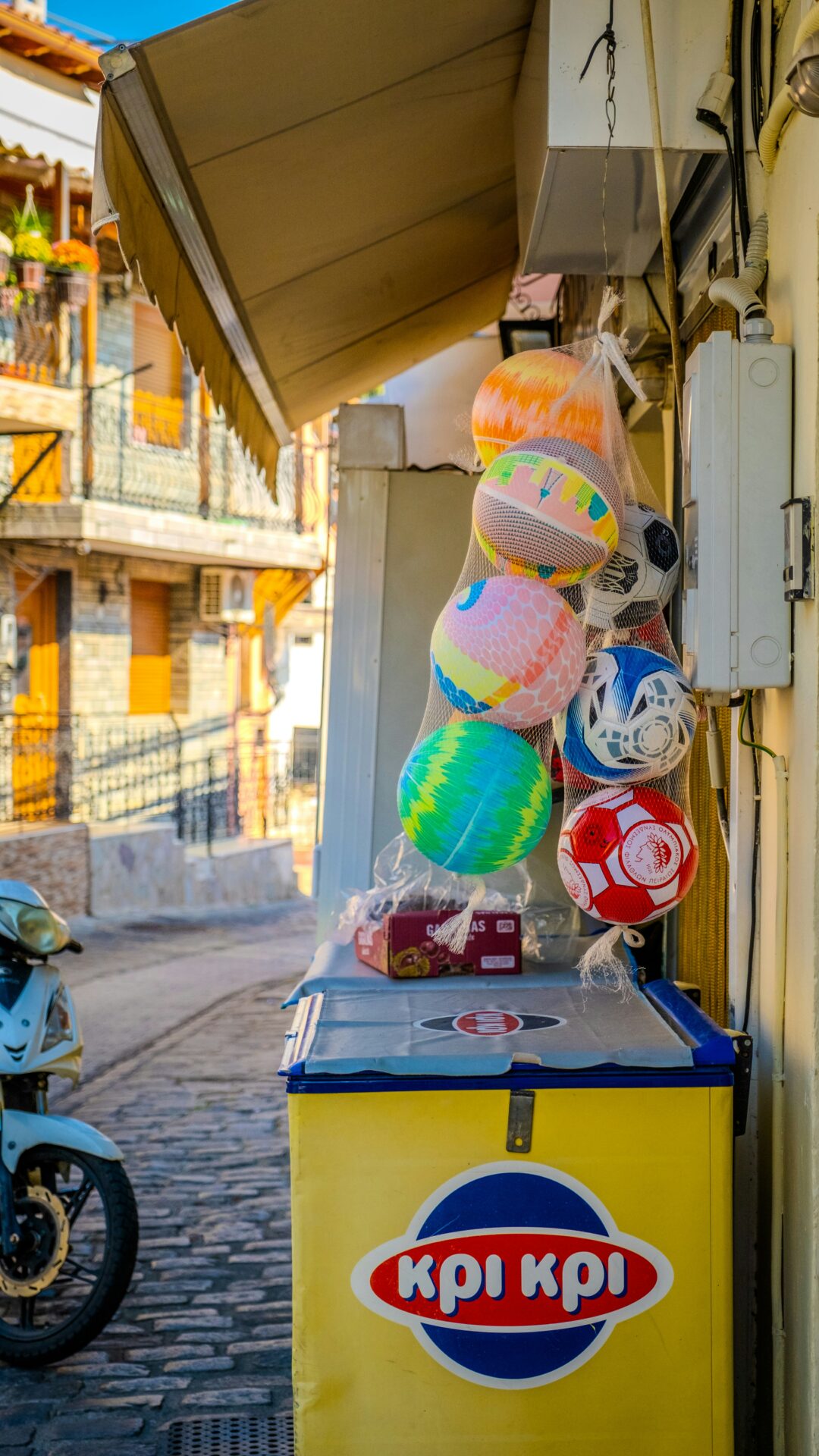When I first landed in Xanthi, I instantly got why people call it the “City of a Thousand Colors.” Just walking down the lively streets, I could sense there’s so much more here than just pretty facades. Xanthi’s energetic student vibe and deep tobacco roots give the city a unique charm that you pick up on with every step.
I found myself slipping from cozy cafés packed with students into old warehouses that still whisper stories of a tobacco boom. Around every corner, something unexpected popped up. There’s this buzz—students laughing over coffee, wild street art, and old traditions mixing with today’s energy.
Once I got a taste of Xanthi’s student neighborhoods and those winding tobacco routes, I just wanted to keep exploring. If you’re after a travel spot that’s both colorful and full of stories, this city should be right up there.

Exploring Xanthi: The ‘City of a Thousand Colors’
As I wandered Xanthi, every street seemed to explode with color and personality. The city’s layered history blends with vibrant student energy and old customs, so every corner feels alive.
A Walk Through Narrow, Painted Streets
My favorite thing to do was just get lost in Xanthi’s maze of narrow, winding streets. Each alley felt brighter than the last—houses splashed in blues, pinks, and yellows.
Some doors had quirky, hand-painted designs. Balconies spilled over with green plants and flowers.
Locals hung out at tiny cafés, sipping coffee and chatting in small groups. I passed bakeries with windows full of fresh bougatsa and sweet treats. Grabbing a snack made me feel like I’d stepped right into daily life.
The colors and the everyday scenes made the whole city feel warm and alive.
If you go, here’s what I’d do:
- Snap photos by the decorated houses near Eleftherias Square.
- Look up—you’ll spot old shutters and fancy iron balconies.
- Don’t rush. Go for a walk in the early evening when the light gets golden.

The Magic of Old Xanthi and Architectural Wonders
As I went deeper into Old Xanthi, I couldn’t ignore the wild mix of Ottoman mansions, neoclassical buildings, and tobacco warehouses. Restorers have brought many back to life, keeping those detailed wooden balconies and colorful facades.
I stepped into the Folklore Museum, which sits inside a grand old mansion. High ceilings, hand-painted walls—suddenly, Xanthi’s merchant past felt real. Tall archways and cobbled streets made me think about all the different cultures that shaped this place.
Some things that stood out:
- Ottoman-era houses with ornate doors and painted details.
- Neoclassical villas that show off Xanthi’s tobacco wealth.
- Old tobacco warehouses now turned into studios, galleries, or student hangouts.

Annual Festivals and Cultural Celebrations
Xanthi really comes alive during festival season. I happened to visit in spring and caught the Carnival—there were wild parades, live bands, and street food everywhere.
People from all over Greece showed up, and the city just buzzed with laughter and music.
In autumn, the Old Town Festival took over the historic district. I tried local dishes, watched folk dancers, and heard traditional music mix with modern beats. These festivals gave me the best moments to meet locals and travelers alike.
Events worth catching:
- Xanthi Carnival in February or March, with wild street parties.
- Old Town Festival in September, all about music, dance, and crafts.
- Smaller neighborhood parties where everyone’s welcome to dance or try homemade treats.

Xanthi’s Dynamic Student Life
When I got to Xanthi, the student energy hit me right away. With so many students around, every street buzzes—from cozy cafés to late-night food stands and packed music bars.
The blend of cultures and student traditions makes Xanthi feel different from anywhere else in Greece.
Top Hangouts and Social Hubs for Students
If you’re looking for a spot to chill or meet people, you’ll never run out of options. Platia Dimokratias, the main square, is the heart of student life. No matter the time, students fill the square after class or on weekends.
Coffee houses circle the square, some open all day. They’re good for studying or just unwinding.
The Old Town’s winding streets are always lively. Bars like Kastro and Notos are full of laughter and music, with open-mic nights and live bands. I found vintage bookshops, board game cafés, and street art that made every walk feel like an adventure.
Student-run events keep things interesting. I stumbled onto open-air movie nights in parks and impromptu theater performances by local students. It’s easy to feel at home, even if you’re new.

University Culture and Academic Opportunities
The Democritus University of Thrace anchors Xanthi’s education scene and draws students from all over. When I enrolled, I found professors and students surprisingly open and welcoming.
Debates, seminars, and student clubs fill the calendar. There’s a real push for creativity—art students hold pop-up galleries, engineering students run robotics demos. The international program made it easy to meet exchange students and join in cultural festivals.
Courses challenge you, but support is everywhere. Study groups, mentorships, and free workshops made it easy for me to settle in. I felt encouraged to try new things, both in class and out.

Affordable Eats and Local Delicacies
Students in Xanthi bond over food. I got hooked on bougatsa (that flaky pastry) from corner bakeries—perfect between lectures.
For less than a coffee in Athens, I’d fill up on souvlaki and fries at tiny grill spots hidden down side streets.
Local tavernas offer daily student specials. I often sat at long wooden tables, sharing grilled meats, veggies, and salty feta, surrounded by laughter. If you want to try something unique, go for kavourmas (spiced pork) or a glass of mountain herbal tea.
During festivals or late nights, food trucks and pop-ups serve piping hot gyros, cheese pies, and even vegan snacks. Eating in Xanthi isn’t just about food—it’s how you make friends and feel at home.

Nightlife Beyond the Ordinary
After dark, Xanthi wakes up in a whole new way. Nightlife here is full of surprises. Some nights, I squeezed into tiny jazz bars hidden behind old stone walls. Other nights, I danced at student parties in modern clubs, each with its own crowd and playlist.
If you’re into culture, you’ll find film screenings or acoustic gigs in open courtyards. Live music is everywhere—rock, Greek folk, hip-hop—and most places welcome new faces.
I’d often drift from street food stands to riverside bars, laughing with friends as we crossed narrow bridges over the Kosynthos River. There’s a real sense of freedom—no set plan, just a night full of possibilities and new friends waiting somewhere around the corner.

Tracing Xanthi’s Rich Tobacco Heritage
As I wandered Xanthi, I couldn’t help but notice how much tobacco history shapes the city’s spirit. Grand old warehouses, family stories, and hands-on museums keep tobacco’s legacy right out in the open.
Tobacco Warehouses and Living History
Xanthi’s tobacco warehouses grabbed my attention right away. They’re massive, with tall walls, arched windows, and heavy old doors. These places once stored mountains of tobacco, fueling a trade that made the city boom.
Now, many warehouses have new lives. Some became art galleries, cafés, or community centers. When I stepped inside, I almost imagined the smell of drying tobacco and the shuffle of workers’ boots. Scratched walls and old equipment hint at the busy days when tobacco ran the show.
A few warehouses you shouldn’t miss:
- Kaloudi Tobacco Warehouse (central, classic brick look)
- Papanikolaou Warehouse (you can take a historical tour)
- FEX Cultural Center (hosts events, set in a former warehouse)
These spots connect you to Xanthi’s past and show how the city’s always changing.

Stories of Tobacco Merchants and Their Legacy
Stories from tobacco merchants stuck with me. Local families used to own tobacco shops or work in the factories. Names like Vafeiadis or Papadopoulos still get respect for helping the city grow.
I loved hearing locals talk about their grandparents sorting tobacco leaves by hand. Merchant houses, with carved wooden balconies and stained-glass windows, show off the success tobacco brought. As I walked through the old quarters, I spotted these elegant homes everywhere.
People here take pride in keeping these stories alive. The city remembers the booms and busts of the tobacco trade. You’ll see the legacy pop up in daily life, festivals, and even in school lessons.

The Tobacco Museum Experience
I couldn’t leave Xanthi without checking out the Tobacco Museum. It’s small but packed with interesting stuff, set in a restored warehouse. The museum displays machines for sorting and drying tobacco, plus old photos of pickers out in the fields.
Interactive exhibits let me try sorting tobacco leaves or handle old merchant tools. Info panels explain why Xanthi’s climate made its tobacco so famous.
I saw stamps from world markets, which helped me get why Xanthi was once known everywhere for its tobacco.
Guided tours run in English and Greek, so it’s easy to dig into the details. For me, the museum made Xanthi’s tobacco story feel personal and real.
Authentic Local Experiences in Xanthi
Exploring Xanthi has been about so much more than just the colorful houses. I got pulled into the city’s little, everyday wonders—charming places to eat, packed markets, quirky shops, and quiet river walks. Every experience brought out the local spirit and made Xanthi stick in my memory.

Hidden Cafés and Local Markets
As I wandered the narrow streets, I stumbled across cafés tucked between old stone walls. My favorite was Kafeneio tou Manoli, where the owners poured sweet Greek coffee into tiny cups and students mixed with older locals.
Soft music and lively chatter made every visit feel relaxed and friendly.
The Saturday bazaar was another highlight. Local farmers set out fresh fruit, olives, and cheeses. I bought bread still warm from the oven and chatted with a woman selling fresh herbs.
If you go, try to arrive early before the crowds. Don’t be shy about sampling—locals love to share their produce.

Artisanal Crafts and Boutique Shops
I spent way too long window-shopping in the old town. Xanthi has lots of small shops where artisans sell jewelry, leather, and woven textiles.
One afternoon, I watched a craftsman set stones into silver rings, explaining (with a mix of English and Greek) how each pattern tied back to local tradition.
Boutique stores spilled onto cobbled streets with colorful displays. I picked up a jar of apricot and walnut preserves—a great gift. If you love unique finds, these shops are a treat. Most owners will gladly tell you the stories behind their crafts if you ask.

Outdoor Adventures and Riverside Strolls
A walk along the Kosynthos River surprised me. I followed a path lined with willows and old bridges, stopping to watch ducks glide by.
On sunny days, students lounged along the banks, reading or strumming guitars.
If you love the outdoors, hiking trails wind into the green hills outside town. I joined a group from the university for a morning hike—the views over Xanthi and tobacco fields made the climb worth it.
For something low-key, a picnic by the river with fresh market treats was all I needed to feel like I belonged in Xanthi.

Planning the Perfect Visit to Xanthi
When I started planning my trip to Xanthi, I realized timing really matters. Picking the right season and knowing a few student hacks made every day feel more special.
Best Times of Year to Explore Xanthi’s Life
Honestly, spring is my favorite time in Xanthi. From March to May, the old town’s narrow streets fill up with blooming flowers.
The famous Xanthi Carnival lands in late winter or early spring. Costumes, parades, and music take over the city, and it’s just impossible not to get swept up in the energy.
Summer brings warm days, but it never gets too crowded. I love taking long walks or biking along the river when the pace slows down.
Once fall hits, the air turns crisp. Xanthi’s tobacco history feels even richer then, especially during harvest celebrations and quirky local festivals.
If you want fewer crowds and cheaper prices, try coming on weekdays or outside the main festival season. Local cafes and student hangouts are way quieter, so it’s easier to meet people and really catch the city’s vibe.

Insider Advice for Student Travelers
When I traveled as a student, squeezing the most out of my budget really mattered. I hunted for deals at student-friendly hostels and found some great meals at local tavernas.
Plenty of cafes near the university offer special lunch prices. You can grab authentic food for just a few euros if you look around.
Getting around Xanthi? Super simple and easy on the wallet. Buses show up pretty often, but honestly, walking around helped me stumble across art murals and little hidden markets tucked into the old town.
I always kept my student ID close. That card got me discounts at museums, cultural spots, and even some insider tips from local students about the best nightlife.
If you’re in town during festival season, make sure to ask about free or discounted entry for students. Sometimes you’ll find workshops and events just for us—worth checking out, right?
Packing light made everything smoother, especially when bouncing from city shops to hillside views. I’d say bring comfy shoes, a portable charger (trust me, you’ll need it), and maybe a small notebook to jot down the names of local hotspots people mention along the way.

